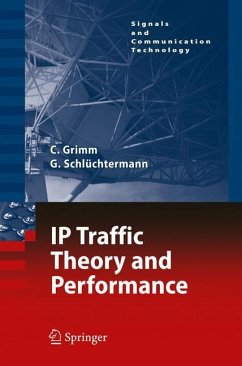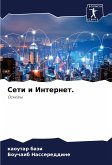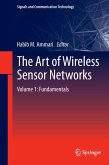This book presents different approaches in IP traffic theory and classifies them, especially towards applications in the Internet. It comprises the state of the art in this area, which is currently presented only by numerous research papers and overview articles.
The book provides an ideal starting point for detailed studies of traffic analysis in IP networks. It gives the reader the possibility to judge on different models and to select the appropriate for his individual needs in applications.
The mathematical toolbox for this is kept as low as low as possible - the authors build a bridge between abstract representation of mathematical tools and applications. This, in turn, is certainly the most interesting topic for experts planning large data networks as well as practitioners and researchers working in this area The book also serves as useful reference for lecturers and students at universities.
Reading without meditation is sterile; meditation without reading is liable to error; prayer without meditation is lukewarm; meditation without prayer is unfruitful; prayer, when it is fervent, wins contemplation, but to obtain contemplation without prayer would be rare, even miraculous. Bernhard de Clairvaux (12th century) NobodycandenythatIP-basedtra?chasinvadedourdailylifeinmanyways and no one can escape from its di?erent forms of appearance. However, most people are not aware of this fact. From the usage of mobile phones - either as simple telephone or for data transmissions - over the new form of telephone service Voice over IP (VoIP), up to the widely used Internet at the users own PC, in all instances the transmission of the information, encoded in a digital form, relies on the Internet Protocol (IP). So, we should take a brief glimpse at this protocol and its constant companions such as TCP and UDP, which have revolutionized the communication system over the past 20 years. The communication network has experienced a fundamental change, which was dominated up to end of the eighties of the last century by voice appli- tion.Butfromthemiddleoftheninetieswehaveobservedadecisivemigration in the data transmission. If the devoted reader of this monograph reads the title 'IP tra?c theory and performance', she/he may ask, why do we have to be concerned with mod- ing IP tra?c, and why do we have to consider and get to know new concepts.
The book provides an ideal starting point for detailed studies of traffic analysis in IP networks. It gives the reader the possibility to judge on different models and to select the appropriate for his individual needs in applications.
The mathematical toolbox for this is kept as low as low as possible - the authors build a bridge between abstract representation of mathematical tools and applications. This, in turn, is certainly the most interesting topic for experts planning large data networks as well as practitioners and researchers working in this area The book also serves as useful reference for lecturers and students at universities.
Reading without meditation is sterile; meditation without reading is liable to error; prayer without meditation is lukewarm; meditation without prayer is unfruitful; prayer, when it is fervent, wins contemplation, but to obtain contemplation without prayer would be rare, even miraculous. Bernhard de Clairvaux (12th century) NobodycandenythatIP-basedtra?chasinvadedourdailylifeinmanyways and no one can escape from its di?erent forms of appearance. However, most people are not aware of this fact. From the usage of mobile phones - either as simple telephone or for data transmissions - over the new form of telephone service Voice over IP (VoIP), up to the widely used Internet at the users own PC, in all instances the transmission of the information, encoded in a digital form, relies on the Internet Protocol (IP). So, we should take a brief glimpse at this protocol and its constant companions such as TCP and UDP, which have revolutionized the communication system over the past 20 years. The communication network has experienced a fundamental change, which was dominated up to end of the eighties of the last century by voice appli- tion.Butfromthemiddleoftheninetieswehaveobservedadecisivemigration in the data transmission. If the devoted reader of this monograph reads the title 'IP tra?c theory and performance', she/he may ask, why do we have to be concerned with mod- ing IP tra?c, and why do we have to consider and get to know new concepts.








